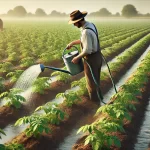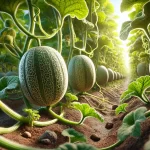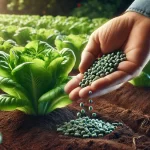Proper irrigation is essential for the successful cultivation of lettuce, as this vegetable requires a constant water supply to develop juicy, high-quality leaves. In this article, we explore different irrigation systems for lettuce, analyze their advantages and disadvantages, and provide technical recommendations and practical tips to help you choose the ideal system for your production.
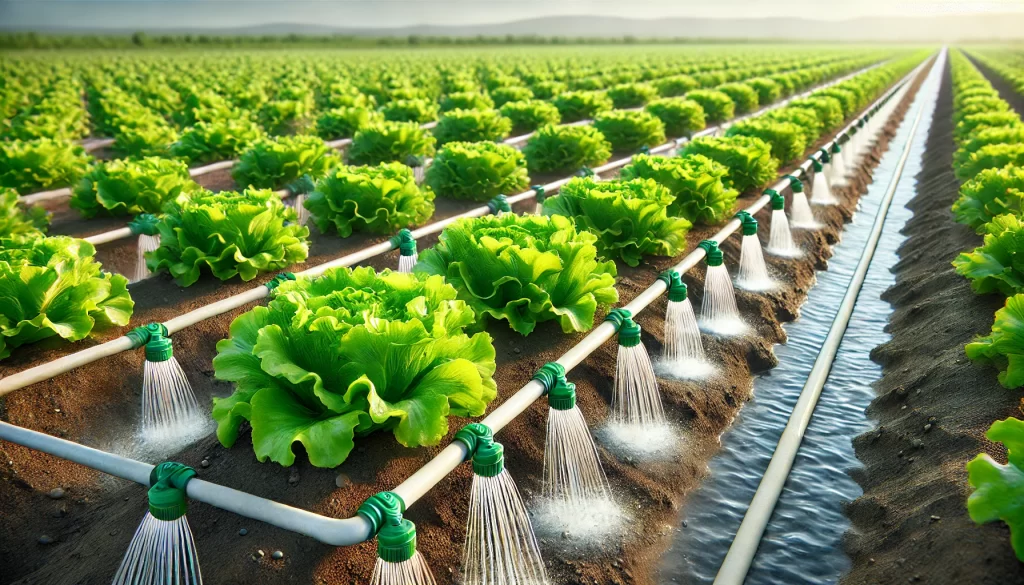
Importance of Irrigation in Lettuce Cultivation
Lettuce, being high in water content, is particularly sensitive to variations in water availability. Proper irrigation ensures:
- Optimal growth: Provides sufficient moisture for germination and leaf development.
- Product quality: Prevents water stress that can cause bitterness or fibrous leaf structures.
- Resource efficiency: A well-designed irrigation system reduces water consumption and minimizes costs.
Types of Irrigation Systems for Lettuce
1. Drip Irrigation
Drip irrigation is one of the most efficient options for lettuce cultivation.
- Advantages:
- Precise water application directly to the root zone.
- Minimizes evaporation and reduces foliar diseases.
- Significant water and fertilizer savings through fertigation.
- Disadvantages:
- Requires initial investment in infrastructure.
- Needs regular maintenance to prevent emitter clogs.
2. Sprinkler Irrigation
Sprinkler irrigation disperses water over the crop like rain.
- Advantages:
- Uniform coverage of large areas.
- Relatively easy installation.
- Disadvantages:
- Higher loss due to evaporation.
- Risk of leaf diseases from excessive spraying.
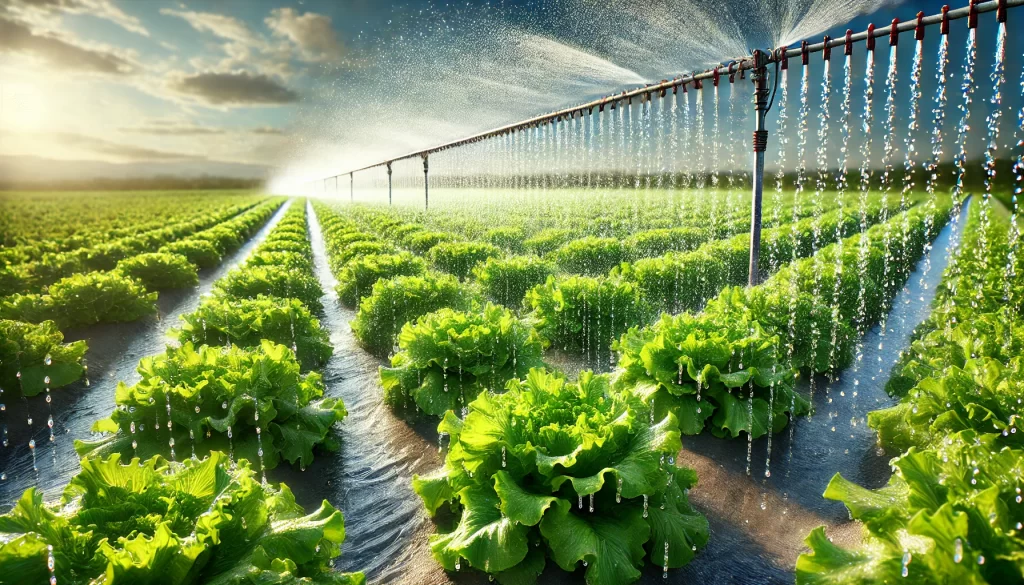
3. Subsurface or Underground Irrigation
Subsurface irrigation delivers water below the soil surface, directly to the roots.
- Advantages:
- Minimizes water contact with leaves, reducing diseases.
- Efficient water use with less evaporation.
- Disadvantages:
- High investment in installation and design.
- Challenging to adjust and repair systems once installed.
Comparative Table of Irrigation Systems for Lettuce
| Irrigation System | Advantages | Disadvantages | Best for… |
|---|---|---|---|
| Drip Irrigation | High efficiency, water and fertigation savings | Initial costs, regular maintenance | Intensive and sustainable production |
| Sprinkler Irrigation | Wide coverage, easy installation | Evaporation, risk of diseases | Extensive crops with abundant water |
| Subsurface Irrigation | Less evaporation, reduces foliar diseases | High investment, complex maintenance | Sensitive crops prone to diseases |
Grow Lush Greens with Sereniseed!
Discover the Certified Organic Green Leaf Lettuce Seed Collection by Sereniseed. This 10-variety pack features Green Towers Romaine, Winter Density, Dark Lolla Rossa, Black Seeded Simpson, and more, perfect for fresh salads and healthy meals. 100% organic, non-GMO, and includes a handy growing guide.
Buy Now and Start Growing! AgronoBlog – Agriculture Blog
AgronoBlog – Agriculture Blog 